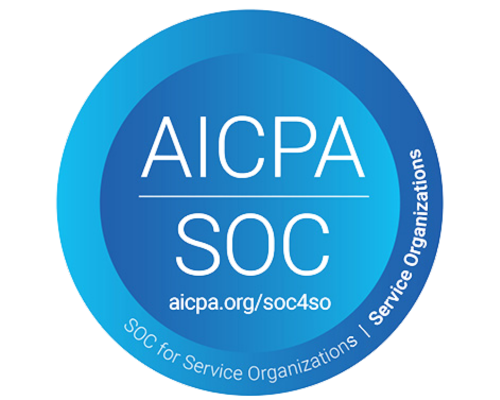Avoiding the Crossfire of Multi-Agency Audits: How to Safeguard Your Business

Introduction
As businesses navigate the complexities of hiring and employment compliance, they face an increasingly aggressive enforcement landscape. Federal agencies such as the Department of Homeland Security (DHS), U.S. Immigration and Customs Enforcement (ICE), and the Department of Labor (DOL) are collaborating more than ever to ensure businesses meet I-9 compliance standards. This rising trend in multi-agency audits has left employers more exposed to compliance checks, increasing the risk of penalties and operational disruptions. Here’s how your business can avoid the crossfire of multi-agency audits and safeguard your future.
The Growing Risk of Multi-Agency Audits
Historically, agencies like ICE focused primarily on immigration-related violations, while the DOL concentrated on wage and hour issues. However, recent years have seen an increase in cross-agency collaboration. These agencies are now sharing data, aligning enforcement efforts, and conducting coordinated audits to ensure that businesses comply with all aspects of employment and immigration law.
I-9 audits conducted by ICE increased by 375% in 2018, and overall, by 5 times during 2018-2021. The rules and regulations for I-9 compliance will continue to evolve. We should expect a much higher focus on raids and I-9 inspections with the latest change in administration. This surge in enforcement signals a growing threat to businesses, particularly those unaware of the combined impact of multi-agency audits.
In response to increasing multi-agency collaboration, the U.S. Department of Labor (DOL) has recently formed an interagency working group with the Department of Homeland Security (DHS), the Department of Justice (DOJ), the Equal Employment Opportunity Commission (EEOC), and the National Labor Relations Board (NLRB). The group’s goal is to provide formal guidance to employers on conducting I-9 audits properly, ensuring that these audits do not result in discrimination or retaliation against employees. This joint guidance outlines key information for employers, including the scope and purpose of I-9 audits, important considerations before conducting internal audits, and how to address errors or deficiencies found on Forms I-9. It also includes instructions on how to correct issues related to E-Verify queries and guidance on the anti-discrimination provisions. The full guidance can be accessed on the DHS website (Guidance for Employers), offering crucial information for employers to conduct audits in compliance with immigration laws while safeguarding their employees' rights.
The Impact of Multi-Agency Audits on Employers
When multiple federal agencies collaborate on audits, businesses face the potential for more comprehensive investigations. These audits are no longer limited to immigration-related issues; they often involve multiple facets of employment law, from wage theft to worker misclassification. A violation in one area can trigger audits from other agencies, amplifying the risks of penalties and operational disruptions.
For example, if your business fails to comply with one aspect of I-9 documentation, ICE might initiate an audit, which could then lead the DOL to investigate wage-related violations. The interconnected nature of these audits means that the consequences of non-compliance can snowball quickly, affecting various areas of your business.
The penalties for I-9 paperwork violations have increased and now range from $281 to $2,789, as announced by DHS on June 28, 2024. Also, 76% of paper Form I-9s have at least one error (and a similar percentage go missing or are incomplete). These figures highlight the potential financial toll of non-compliance, but they also reflect the broader cost of the disruption caused by multi-agency audits. Businesses could face not only financial penalties but also reputational damage and legal complications.
How Cross-Agency Collaboration Puts Your Business at Risk
The rise in cross-agency audits means that employers must be prepared for greater scrutiny. With agencies like ICE, DHS, and the DOL now sharing information and coordinating efforts, businesses can no longer afford to approach compliance in isolation. Every mistake, whether related to immigration, wage laws, or worker classification, could be flagged by multiple agencies.
The risk of multi-agency audits is particularly high for businesses that employ a significant number of workers or operate in industries subject to more frequent oversight, such as agriculture, construction, or healthcare. As more agencies work together to ensure compliance, employers need to be vigilant in managing their records and practices across all areas of employment law.
Protecting Your Business: Steps to Avoid the Crossfire
Given the growing risks associated with multi-agency audits, it is essential for businesses to take proactive steps to ensure compliance. Here are a few key strategies to safeguard your business:
- Stay Current with Regulatory Changes: Compliance laws are constantly evolving, and as agencies like ICE, DHS, and the DOL ramp up their enforcement efforts, it’s more important than ever to stay updated on the latest changes. Ensure your team is familiar with the current requirements for Form I-9 completion and E-Verify processes. Keeping informed about legislative changes can help you avoid mistakes that could trigger an audit.
- Conduct Regular I-9 Audits: Regular internal audits of your I-9 forms can help ensure that all documents are complete, accurate, and in compliance with federal regulations. A proactive review can help identify any gaps before they are flagged during an audit. Regularly reviewing your I-9 forms and correcting discrepancies early can go a long way in preventing future issues.
- Correct Errors Quickly
When discrepancies are found during internal audits, it’s important to correct them promptly. Errors, omissions, or other deficiencies on Form I-9 must be addressed to comply with immigration laws. The U.S. Department of Labor (DOL) recently created an interagency working group to issue formal guidance to employers, ensuring that I-9 audits are conducted properly and do not discriminate against employees. This guidance offers practical advice on how to:
- Correct errors and omissions on Forms I-9
- Address deficiencies related to E-Verify queries
- Follow anti-discrimination mandates to ensure fair treatment of employees
This joint guidance, which includes input from DHS, DOL, DOJ, EEOC, and the National Labor Relations Board (NLRB), can be found on the DHS website (Guidance for Employers). It provides detailed instructions for conducting I-9 audits in a way that complies with immigration laws while also safeguarding employees from discrimination or retaliation. - Train Your HR Team: Regular training for HR staff on I-9 compliance is critical. Well-trained HR personnel are more likely to catch mistakes and ensure that forms are completed correctly, reducing the risk of non-compliance during audits.
- Leverage Compliance Technology: Automated systems can help streamline the I-9 process by ensuring that forms are completed on time, stored correctly, and easy to access. Leveraging technology can reduce the risk of human error and keep your business in compliance with changing laws.
- Outsource I-9 Compliance: Many businesses are turning to experts to handle their I-9 compliance. Outsourcing this process can help ensure that all forms are filled out correctly, tracked, and stored in compliance with federal regulations. Third-party services like Clear I-9 also reduce the administrative burden on HR teams, allowing them to focus on other priorities.
How Clear I-9 Can Help Your Business Stay Compliant
Navigating the complexities of I-9 compliance doesn’t have to be overwhelming. With Clear I-9, powered by HRlogics, your business can simplify the process and reduce the risk of falling into the crossfire of multi-agency audits.
Key Benefits of Clear I-9:
- Expert Compliance Management: Clear I-9 ensures all forms are completed accurately and in full compliance with federal regulations, reducing the risk of penalties.
- Third-Party Verification: The Clear I-9 platform offers third-party verification of I-9 forms, giving you confidence that your business is meeting compliance standards while avoiding potential mistakes.
- Automated Solutions: Clear I-9 uses technology to streamline the I-9 process, from form completion to storage, ensuring that deadlines are met and records are kept in compliance.
- Scalability for Your Needs: Whether you’re a small business or a large corporation, Clear I-9 scales to meet your needs and ensures that your compliance efforts are seamless.
- Comprehensive Documentation:
Clear I-9 keeps a detailed audit trail, ensuring your business is always prepared for federal audits without the stress of scrambling for paperwork.
Protect Your Business from Risk: Get Started with Clear I-9 Today
With the growing risk of multi-agency audits, there’s no time to waste in ensuring your I-9 compliance is in order. Clear I-9 offers the expertise and tools you need to stay ahead of federal regulations and protect your business from costly penalties and operational disruptions.





